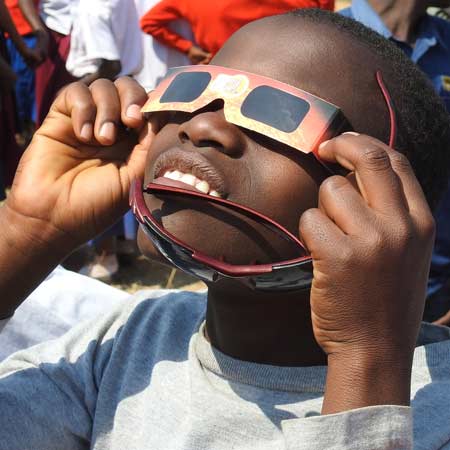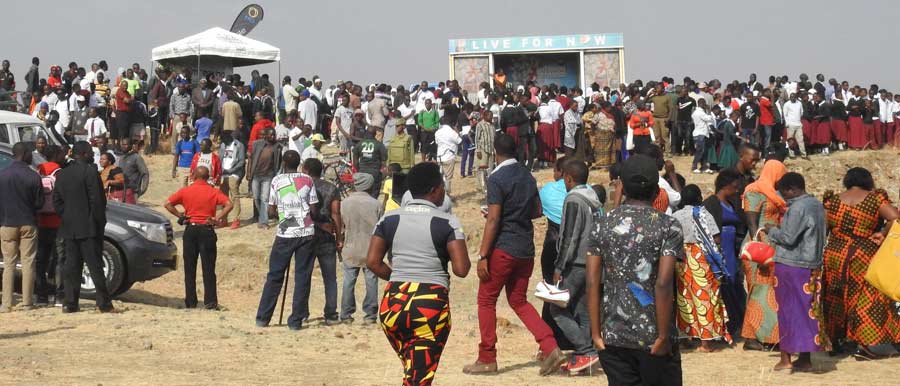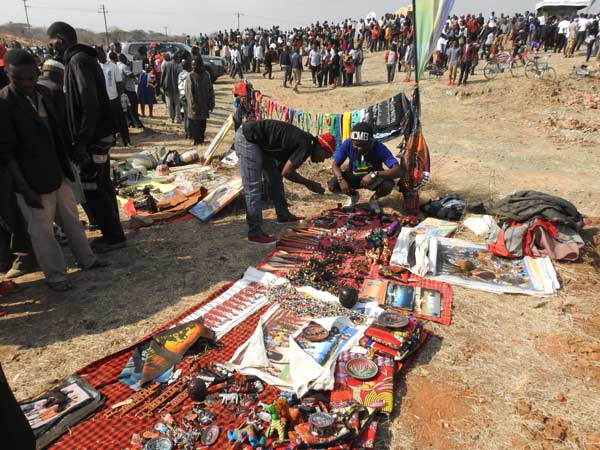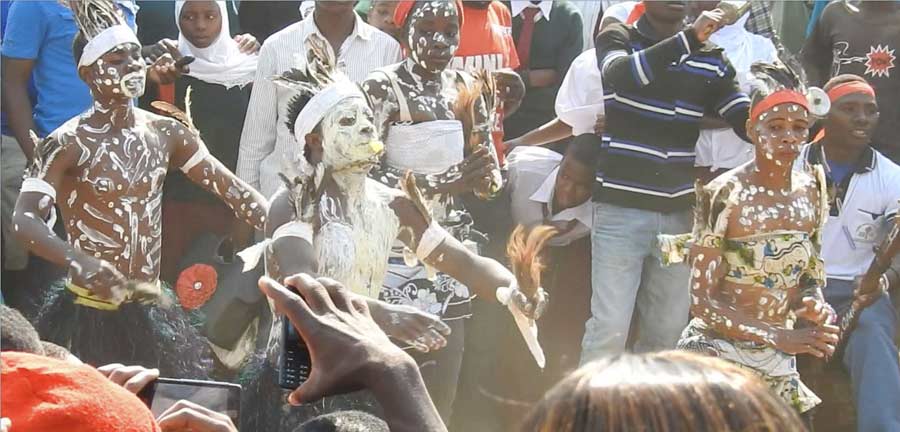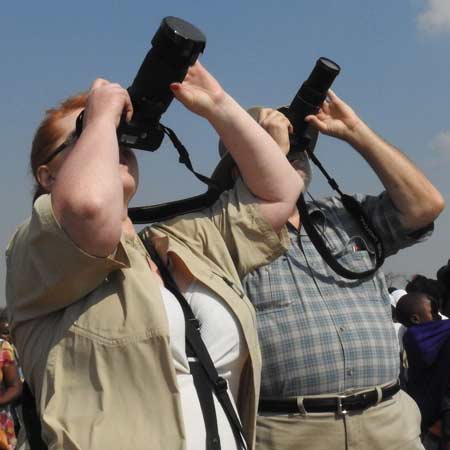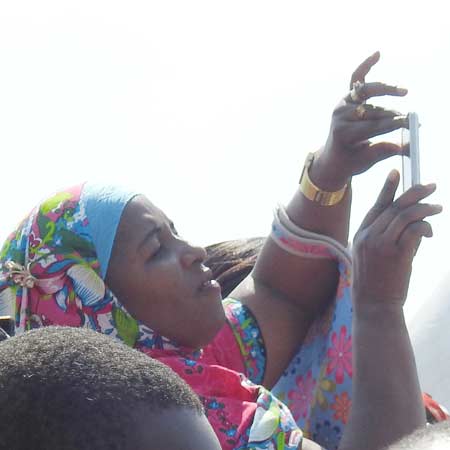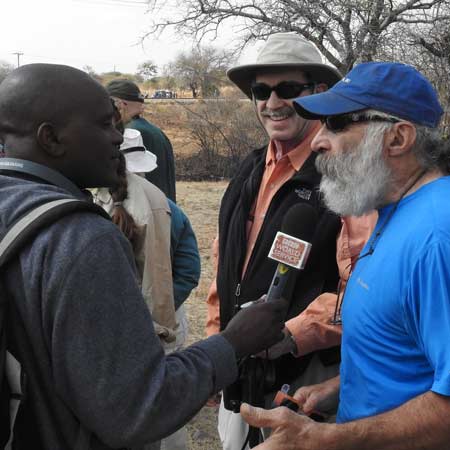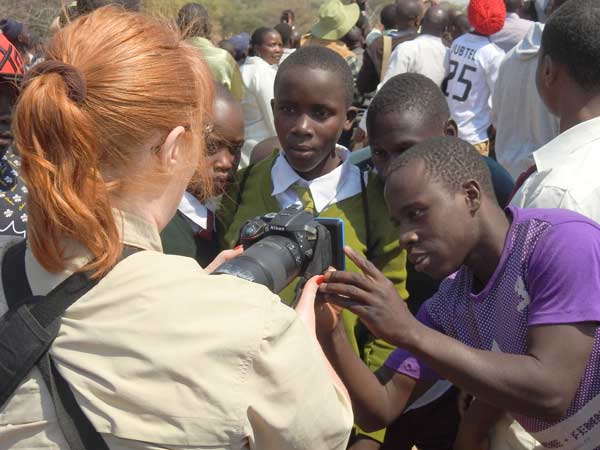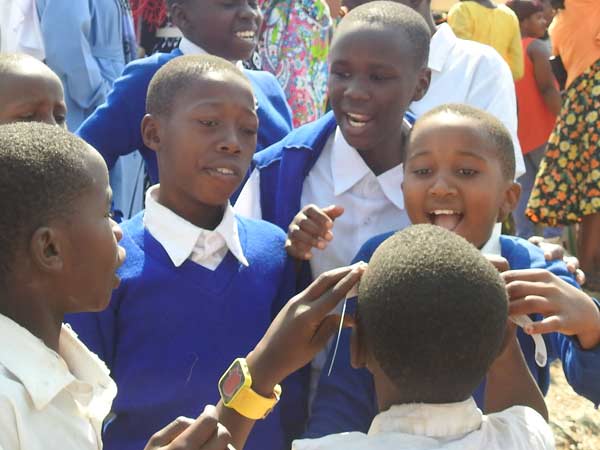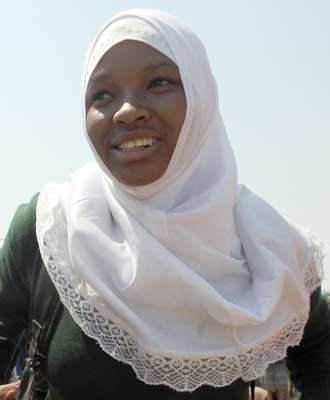We never expected so many people!
Wrenched from our beds at Utengule Coffee Lodge before dawn, we boarded a bus and drove three hours east along the main highway from Mbeya, Tanzania. Turning north, we had continued several miles to Rujewa. This remote little village had been chosen for viewing the Annular Solar Eclipse on 1st September 2016.
A total eclipse of the sun happens when the moon passes in front of the sun, completely obscuring it for a few minutes. An annular eclipse means that a ring of sunlight would be visible surrounding the Moon’s disc. This happens when the Moon’s elliptical orbit takes it so far from Earth that its disc looks smaller than that of the Sun. There are slightly more annular than total eclipses because, on average, the Moon lies too far from Earth to cover the Sun completely. Total and annular eclipses are visible somewhere on Earth about 3 times every 2 years, but at any given spot you would only see one every 400 years. To see an annular eclipse was a very big deal for the people of Rujewa. Their village lay on the median of the path of totality, a strip 100km wide running across northern Madagascar, Mozambique, Tanzania, DRC and Gabon, within which viewers would see the sun and moon perfectly aligned.
The eclipse had been publicized in the national media, with reassurances that this was a natural phenomenon and the world would not end nor the Sun fall from the sky. Tanzania Tourist Board had also promoted it as a tourist attraction. So people came not only from Mbeya region but from far away to see this rare event, including 16 of us all the way from USA.
As the moon began to eat away at the sun, the murmur of the crowd swelled. Arms rose above the heads, shielding eyes, aiming cellphones or tablets or cameras at the sun. My group had brought tripods and filters and long lenses. Each photographer attracted a ring of spectators, eager to look at the image on the back of a digital camera, trying to photograph that with their phones, or merely taking selfies next to the aliens. A roving reporter interviewed some of us for the BBC World Service.
At least half the viewers were crisply uniformed school groups, whose teachers herded them into lines. Each student in turn had a few seconds of wonderment, viewing the sun through the communal eclipse specs. I wandered among the less organized school groups distributing spare eclipse viewers and anarchy.
Several people asked if I could pose for a photo with them. A raucous quartet of party girls sharing a beer can called, “Hey mzungu! Take our picture!” before trooping off in search of fresh excitement.

A young couple approached me, husband dragging pretty wife by her hand.
“My wife has a question for you, sir, but she is too shy to speak to a Mzungu!”
A small crowd gathered. I took her hand and said in Swahili,
“Hello, don’t be afraid. I’m just a human being, like you. What would you like to know?”
She giggled and looked embarrassed but eventually said,
“What is the cause of this thing, this eclipse?”
So I explained how the sun is far away, and how the moon was passing between us and the sun. She seemed to get it, and thanked me.
“You’re very welcome. And beautiful too!”
She dissolved into more giggles and was dragged away.
At 11:53 the eclipse reached its maximum. The day became a little darker and definitely colder, but even 95% obscured, the tropical midday sun was still too bright for us to see the ‘ring of fire’ with the naked eye or an unfiltered camera. I held my eclipse specs over my lens and got an image.
After three minutes the shadow passed. The sky brightened, the warmth returned. An eclipse is so transient, a brief crossing of heavenly bodies. I captured a bright ring in my photo but it could be anything, anywhere.
What I will remember more is the delight on the faces of children and adults alike, whether brown or pink, all united in our excitement and awe at this natural wonder.

